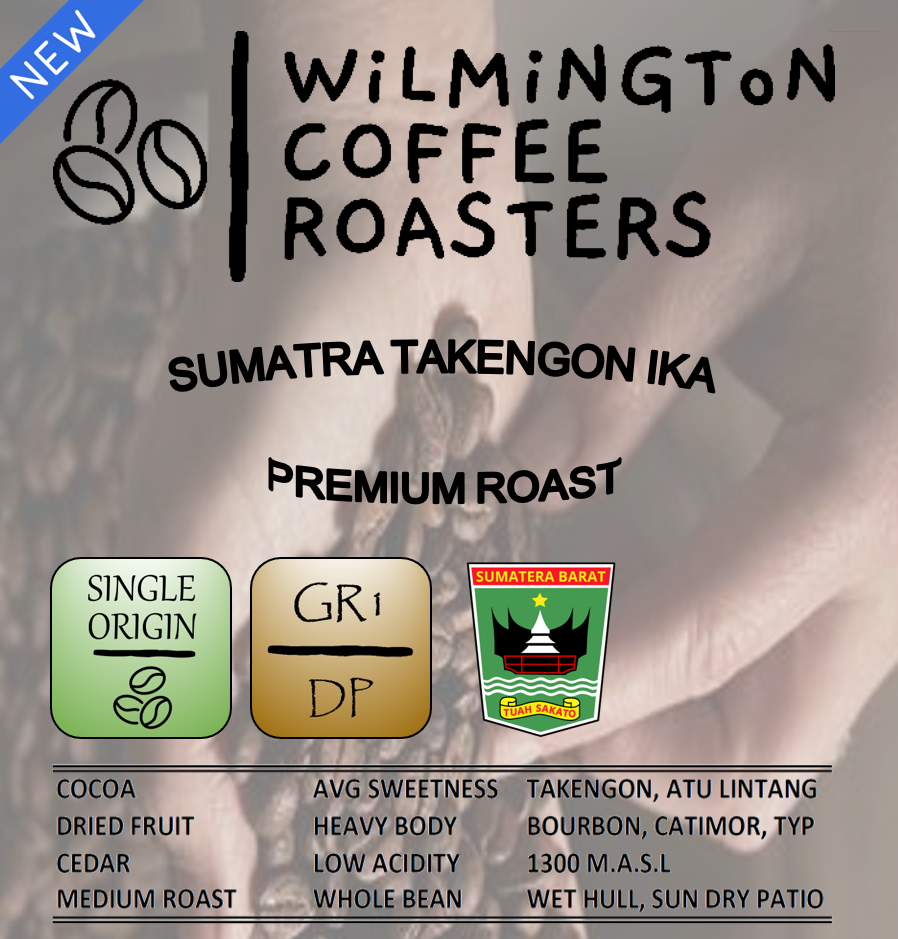
SUMATRA TAKENGON IKA - Premium Roast
Whole Bean (Medium)
$21.99
If you know Sumatra's, you know!
Tasting Notes | |
Cocoa | Average Sweetness |
Dried Fruit | Heavy Body |
Cedar | Low Acidity |
Coffee Type | |
Medium+ Roast Level | Whole Bean |
Demographic | |
Origin: | Sumatra |
Region: | Takengon |
Producer: | PT Ihtiyeri Keti Ara |
Processing: | Wet Hulled |
Process Desc.: | Sun Dry Patio |
Altitude: | 1300m |
Species: | Bourbon, Catimor, Typica |
Grade: | GR1 - Grade 1 (See Below) DP - Double Picked |
Type: | Premium Roast |
Harvest: | June |
Export: | November |
About This Coffee:
The Sumatra Takengon GR1 DP PT IKA is sourced from the Jagong Mill and surrounding family-owned farms located in the Takengon and Atu Lintang coffee region of Aceh province on the island of Sumatra, Indonesia. Irham Junus owns and operates the Jagong Mill with his son, Andi and daughter, Ina. The Junus family has focused on meticulous ripe cherry selection resulting in something truly unique in Sumatra. The Junus family also has full control of the processing and milling right up to the final export stage, avoiding the long and convoluted supply lines that can compromise Sumatran quality.
The acronym GR1 for coffee beans stands for Grade 1, the highest classification in a defect-based grading system. This grading is used by some countries, most notably Ethiopia, to indicate the quality of green coffee.
Grade 1 coffee bean requirements According to these grading systems, to be classified as a Grade 1 specialty coffee bean, the lot must meet the following criteria:
• Defects: The beans must have no primary defects and only a few minor, or "full," defects (usually between 0 and 3). • Quakers: The lot must have no "quakers," which are unripe or improperly roasted beans. • Distinct attributes: The coffee must possess a distinct and positive characteristic in one or more of the following areas: taste, acidity, body, or aroma.
• Moisture content: The beans' moisture content should be between 9% and 13%.
• Uniformity: The beans must be well-sorted, with a maximum of 5% of the beans falling outside the specified screen size. e'
Grade 1 vs. Grade 2 coffee
The distinction between Grade 1 and Grade 2 coffee, especially in a country like Ethiopia, is primarily the defect count. Grade 1 has a stricter, near-zero tolerance for defects, while Grade 2 allows for slightly more. Both are considered "specialty grade" coffee. <2
Non-universal grading It is important to remember that coffee grading is not a universal standard. Countries like Kenya use a different system that grades based on bean size (e.g., AA, AB) rather than defects, and other countries have their own unique grading methodologies.
